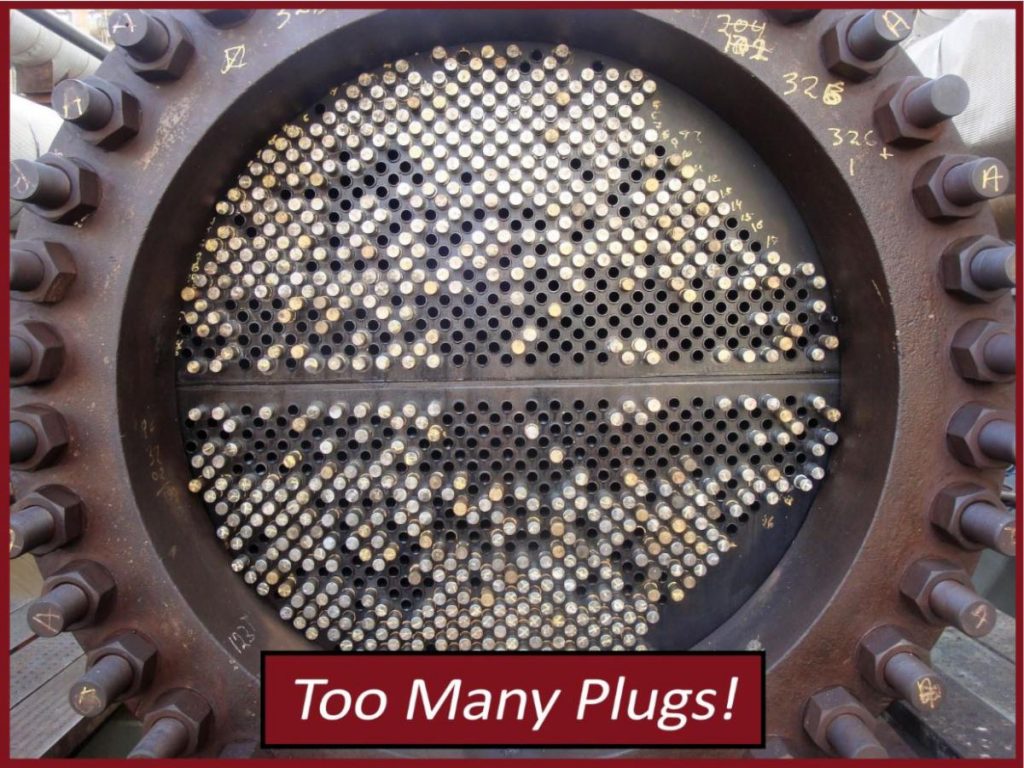#1 – Tube Plugging…
If you work around shell & tube heat exchangers, it is likely that you’ve seen or heard of plugged tubes. Plugging can be intentional, where a leaking tube is plugged to minimize cross-contamination between the shell-side and tube-side fluids or it can be unintentional, due to your process solidifying inside the tubes. In this segment, we are going to address intentional plugging and we will cover unintentional process plugging (a/k/a fouling) in next month’s segment.
When a tube leaks and you are forced to plug the tube, there are a few solutions outside of replacing the tube. The two most common styles of plugs are the tapered, hammer-in variety and the hydraulically-installed two-piece construction type. The former being a lower-cost option and the latter potentially more permanent and a design that can hold more pressure if there are worries of pressure dislodging a tapered plug.
Although it depends on your exact process conditions, generally speaking, most processes will allow the plugging of 5-10% of the total tube count before the unit can no longer get close to the originally-intended heat transfer. At that point, it is time to replace or repair the unit to keep your plant operating profitably. Repair often means a full re-tube (or U-Tube bundle replacement if you have that style heat exchanger).
Some non-destructive examination (NDE) can be utilized to check all the tubes in a unit to determine if there are any existing cracks/porosities/holes/etc. that would require that you plug the tubes. Eddy current testing (ECT) and/or Iris testing (IT) are typical tests utilized for that purpose. ECT and/or IT can also be used on an ongoing, preventative maintenance basis to predict when tubes might be nearing failure due to thinning. If you can predict it, those tubes can be plugged or replaced before they cause costly process upsets.
It’s important to call in a trusted partner when it’s time to discuss your options. Preferably, a partner who can handle design and build of new units as well as repair and cleaning of existing units.







